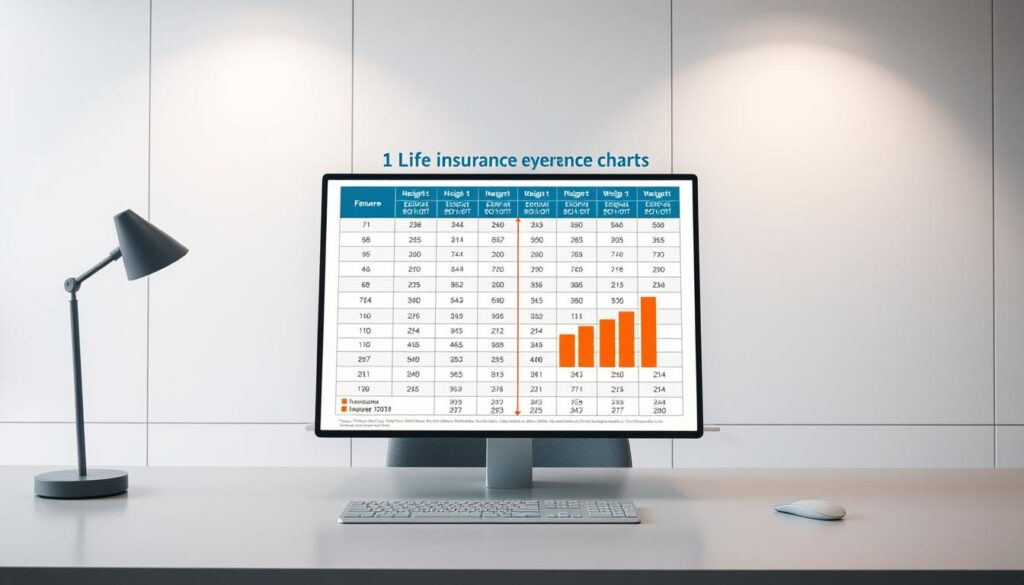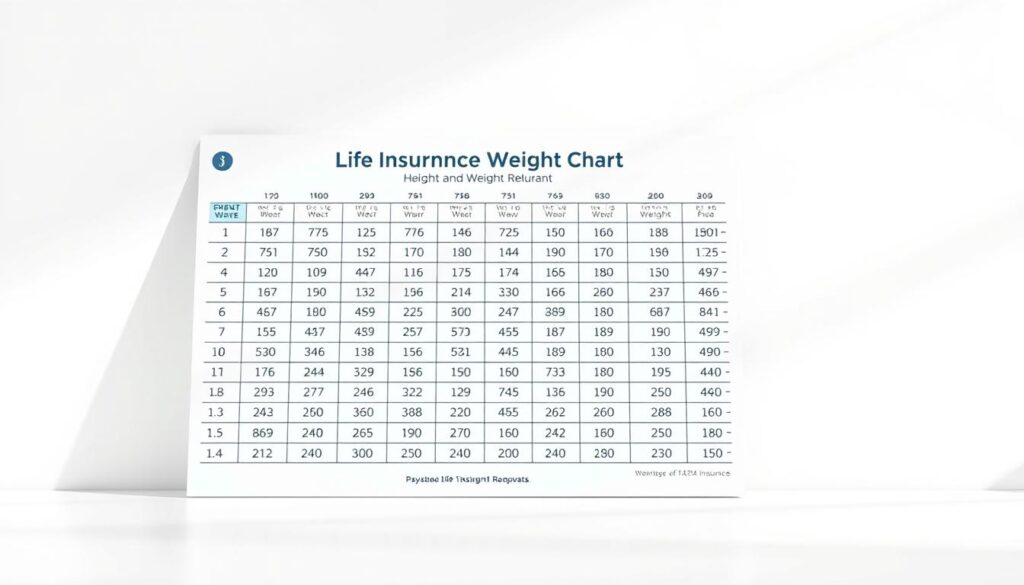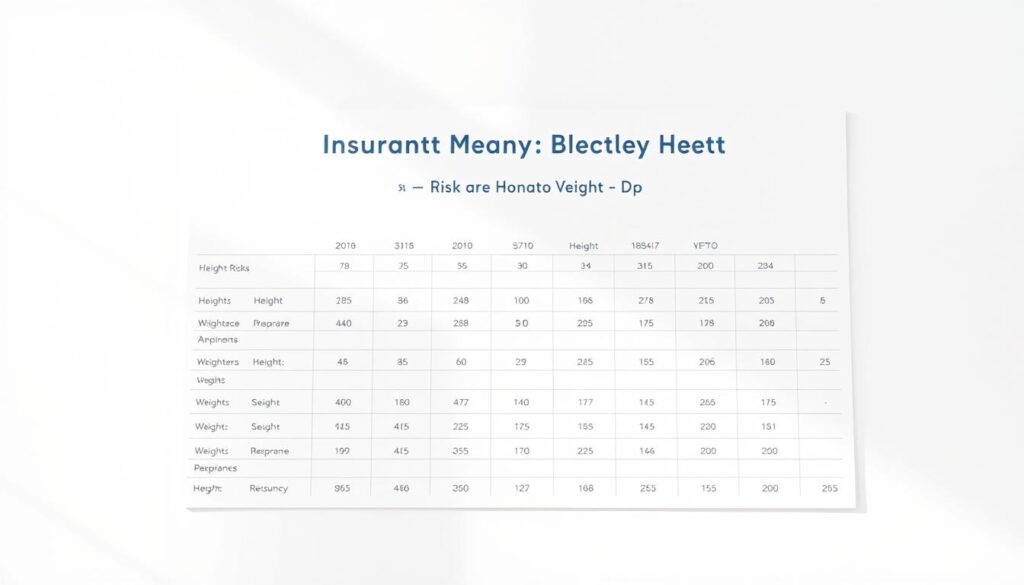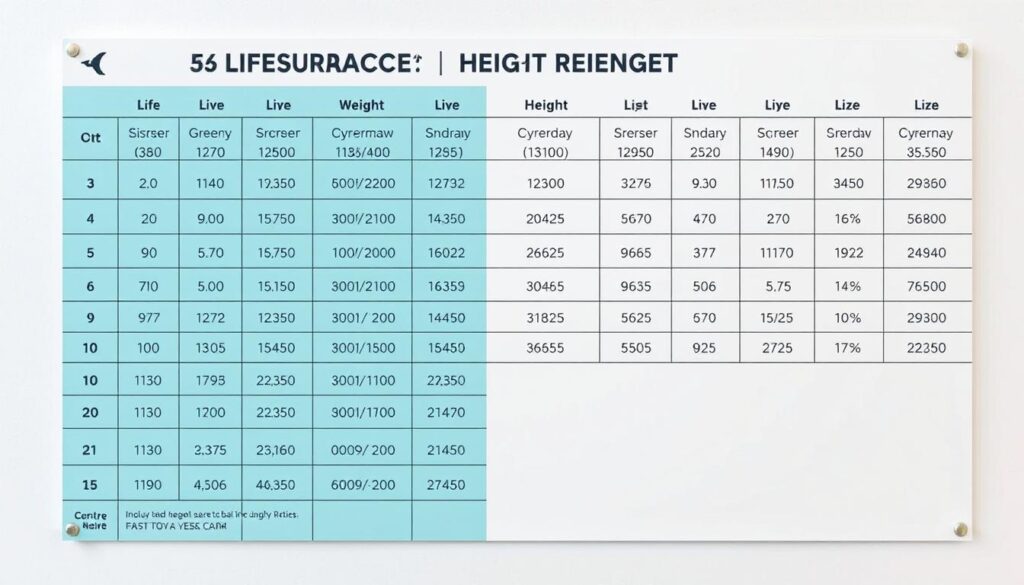Securing life insurance can be a crucial step in financial planning, and health is a significant factor in the underwriting process.
Insurers closely examine an individual’s height and weight to determine their eligibility and rates for life insurance policies.
I will explain how insurance companies use these measurements to assess risk and provide insights into how underwriters evaluate an individual’s build.
Understanding the relationship between body metrics and premiums can help individuals make informed decisions about their insurance coverage.
Key Takeaways
- How insurance companies use height and weight to determine policy rates
- The direct relationship between body metrics and premiums
- The role of underwriting in assessing an individual’s risk profile
- Varying standards for ideal height-to-weight ratios among insurers
- The importance of understanding these metrics before applying for coverage
The Critical Role of Body Metrics in Life Insurance
Understanding how body metrics influence life insurance is essential for consumers. Insurers analyze various factors, including BMI and weight distribution, to predict potential health issues that could impact life expectancy and risk.

How Insurers Evaluate Height and Weight
Insurers use sophisticated algorithms to correlate height and weight measurements with mortality statistics. They create “build tables” that categorize applicants based on their physical measurements, directly influencing premium calculations. For instance, two people of identical weight but different heights will receive different risk classifications due to the varying height-weight ratios.
Insurance companies have refined their evaluation methods over time based on extensive actuarial data. The distribution of weight, particularly around the abdomen, is a focal point due to its association with heart disease and other conditions that could increase an insurer’s liability.
Why Body Measurements Matter in Risk Assessment
Body metrics serve as predictive indicators for potential health issues that could affect life expectancy. Life insurance companies consider certain weight distributions, particularly abdominal weight, as higher risk factors. These measurements fit into the broader underwriting picture alongside other health factors.
Different insurance companies might weigh these factors differently in their proprietary risk assessment models. Understanding this process can help consumers make informed decisions about their life insurance coverage.
| Height | Weight Range | Risk Classification |
|---|---|---|
| 5’8″ | 150-170 lbs | Standard |
| 5’8″ | 171-190 lbs | Substandard |
| 5’8″ | 191+ lbs | High Risk |
“The use of height and weight charts in life insurance underwriting is a transparent indicator of how an insurer perceives risk and determines premium prices.”
Navigating the Life Insurance Height and Weight Chart
Navigating the complexities of life insurance height and weight charts can be daunting, but it’s essential for securing the best rates. Life insurance companies rely heavily on these charts to assess an applicant’s risk profile, which directly impacts premium costs.

How to Read and Interpret Insurance Build Tables
Insurance build tables are matrices that correlate height and weight with risk categories. To understand your standing, locate your height on the chart, track across to your weight, and identify your corresponding risk category. This category significantly influences your premium: the lower your risk, the less you’ll pay for life insurance.
- Find your height on the chart.
- Track across to your weight.
- Identify your risk category.
Understanding these tables can help you anticipate your potential premium costs and make informed decisions about your life insurance.
Standard vs. Preferred Rating Categories Explained
Life insurance companies categorize applicants into different rating categories based on their height and weight. These categories range from Preferred Plus to Standard and below. Preferred Plus indicates the lowest risk, resulting in more favorable premium rates. In contrast, Standard and below categories signify higher risk and consequently higher premiums.
The distinction between these categories is crucial because even a slight difference in classification can lead to significant variations in premium costs. For instance, being classified as Preferred instead of Standard can save you hundreds of dollars annually.
Understanding BMI and Its Impact on Insurance Decisions
BMI is a key factor that insurers consider when evaluating applicants for life insurance coverage. It serves as a simple yet effective tool to categorize individuals into different risk classes based on their weight and height.
The calculation and interpretation of BMI are crucial in determining insurance premiums. Let’s delve into how BMI is calculated and what it means for your life insurance rates.
How BMI is Calculated for Insurance Purposes
BMI is calculated by dividing an individual’s weight in kilograms by their height in meters squared. This formula provides a numerical value that insurers use to assess health risks associated with an applicant’s weight and height. For insurance purposes, BMI is a straightforward metric that helps insurers evaluate the risk of providing coverage.

The 17-30 BMI Range: What It Means for Your Rates
The BMI range of 17-30 is significant for life insurance applicants. A BMI between 20 and 25 is considered normal, while a BMI between 25 and 30 indicates an overweight build, potentially leading to higher premiums due to increased health risks. Conversely, a BMI under 17 is considered underweight, also potentially increasing premiums. Understanding where you fall within this range can help you anticipate your insurance rates.
As your BMI moves toward either end of the spectrum, your premiums are likely to increase. Insurers view individuals with BMIs outside the normal range as higher risk, which can impact your life insurance costs.
How Your Build Affects Life Insurance Premium Costs
Your build plays a significant role in determining your life insurance premium costs. Insurers use height and weight metrics to assess an individual’s health risks, which in turn affects the premium rates they’re offered. As I’ll discuss, even small variations in height-weight ratios can lead to significant differences in premium costs over the life of a policy.
Premium Variations Based on Height-Weight Ratios
The ratio of height to weight is a critical factor in determining life insurance rates. For instance, an individual who is 5’9″ tall may qualify for the preferred best category at 160 pounds, enjoying lower premiums, but might be categorized as standard at 220 pounds, resulting in higher costs. This example highlights the importance of weight management in life insurance cost.
Real Examples: Rate Differences Across Weight Categories
Let’s consider some real-world examples to illustrate how premium costs can vary based on height-weight ratios. For a $500,000 policy, a person with a preferred rating might pay $500 annually, while someone with a standard rating could pay $800 or more. As one expert noted, “The difference in premium costs between the preferred and standard categories can be substantial, often running into thousands of dollars over the policy’s term.” Such variations underscore the need for individuals to maintain a healthy weight to secure better life insurance rates.
To give you a better understanding, here are some key points to consider:
- Premium costs can vary significantly based on height-weight ratios, with differences running into thousands of dollars over a policy’s lifetime.
- The same individual may receive different quotes from various insurance companies due to differences in their build tables and proprietary calculations.
- Age interacts with build metrics to further influence premium calculations, making it essential to consider both factors when applying for life insurance.
By understanding how insurers assess height and weight, you can take proactive steps to manage yourlife insurance costseffectively.
Preparing for Your Life Insurance Medical Examination
Understanding what to expect during your life insurance medical exam can help reduce anxiety and ensure you’re well-prepared. The type of medical exam required can vary depending on the insurance provider and the specific life insurance policy being applied for.
Optimizing Your Measurements
To present your best physical metrics, it’s advisable to be well-hydrated, abstain from alcohol, and be well-rested before the exam. Scheduling the exam for the morning and avoiding heavy meals can also influence metrics like weight and blood pressure readings.
- Reduce salt intake to limit water retention.
- Maintain a calm demeanor to avoid elevated blood pressure.
- Wear comfortable clothing to ensure accurate height and weight measurements.
The Medical Underwriting Process
The underwriting process involves a comprehensive assessment of your health and risk factors. Here’s what you can expect:
| Step | Description |
|---|---|
| Scheduling the Exam | Arrange a convenient time for your medical exam. |
| Medical Examination | A healthcare professional will conduct the exam, measuring your height and weight, and assessing your overall health. |
| Results and Classification | The results will be used to determine your risk classification and life insurance premium. |

By understanding the medical underwriting process and taking steps to optimize your measurements, you can be better prepared for your life insurance application and potentially secure more favorable premium rates.
Insurance Options for Non-Standard Body Types
The traditional life insurance height and weight charts don’t always accommodate everyone, particularly those with non-standard body types. Adults whose build falls within the borderline zone may be accepted standard or rated, depending on their overall risk profile.

Solutions for Overweight and Obese Applicants
For individuals who are overweight or obese, there are still life insurance options available. Some insurance providers specialize in covering applicants who don’t fit standard build tables. These insurance companies may offer more lenient height and weight limits. Additionally, guaranteed issue and simplified issue policies can be alternatives for those who may not qualify for traditional coverage due to weight concerns.
Considerations for Underweight Individuals
Being underweight can also impact life insurance applications. Underweight applicants may need to provide additional medical documentation to demonstrate stable health despite falling below minimum weight thresholds. Working with an independent insurance agent who specializes in high-risk cases can help identify the most accommodating insurance providers. Furthermore, some insurance companies may consider applicants on a case-by-case basis, taking into account overall health and other factors beyond just height and weight.
Improving Your Classification Through Lifestyle Changes
Enhancing your overall health can lead to improved life insurance rates. By adopting a healthier lifestyle, you can potentially lower your premiums and improve your insurance classification.
Weight Management Strategies for Better Premium Rates
Effective weight management is crucial for achieving better premium rates. This can be accomplished through a combination of regular exercise and a balanced diet. Sustainable weight loss not only improves your health but can also lead to significant savings on your life insurance policy over time.
When to Apply or Reapply After Significant Weight Changes
After achieving significant weight loss, it’s essential to understand when to reapply for life insurance to benefit from your new health status. Insurance companies typically require a waiting period after substantial weight changes before they consider reclassification. Documenting your weight loss journey and demonstrating long-term health improvements can strengthen your case for rate reconsideration.
By focusing on sustainable lifestyle changes and maintaining a healthy weight and height ratio, you can improve your insurance classification and potentially lower your premiums.
Conclusion: Making Informed Decisions About Your Life Insurance Coverage
By understanding how insurers assess height and weight, you can better navigate the life insurance landscape and potentially lower your premiums. Your body metrics play a significant role in determining your life insurance rates and eligibility. To make informed decisions, it’s crucial to understand the key factors that influence this assessment.
Working with a licensed life insurance agent can help you find the most favorable options and navigate the complexities of build tables. When comparing offers from different insurance companies, consider how your build affects your classification with each insurer. Being honest about your measurements during the application process is vital, while still presenting yourself in the best possible light.
To balance premium costs against coverage needs, consider your overall health and lifestyle. If you’re making health improvements, timing your application strategically can be beneficial. When consulting with potential insurance agents, ask about their approach to handling clients with non-standard builds. This holistic approach will help you make informed decisions about your life insurance coverage.
By knowing where you stand and consulting with a licensed insurance agent, you can gain valuable insights to help you during your life insurance search.
